What’s next for Cal Poly Humboldt students, faculty and administration after campus protest?
Naomi Schumichen was on the phone with her sister on April 22, taking a walk around the Cal Poly Humboldt campus for fresh, coastal air. She heard shouting from Siemens Hall, and noticed an unusual number of police officers starting to swarm the building.
She watched as a growing number of protesters began chanting for an immediate cease-fire in Gaza and demanding the university disclose any financial dealings with the Israeli military. She crossed the quad to the student activity center and walked up to the second-floor balcony to get a better view of the chaotic scene below.
“I just wanted to be there,” Schumichen said, “in case something happened, or somebody got hurt.”
She said she left the scene before the violent clash that day between police and protesters that resulted in a student-led occupation of the university’s administrative building. For over a week, dozens of students barricaded themselves in Siemens Hall while hundreds of their classmates took watch around the building, stayed overnight in tents, participated in a faculty-led teach-in, learned traditional Palestinian dances, and lit candles and burnt sage for victims of the Israel-Hamas War.
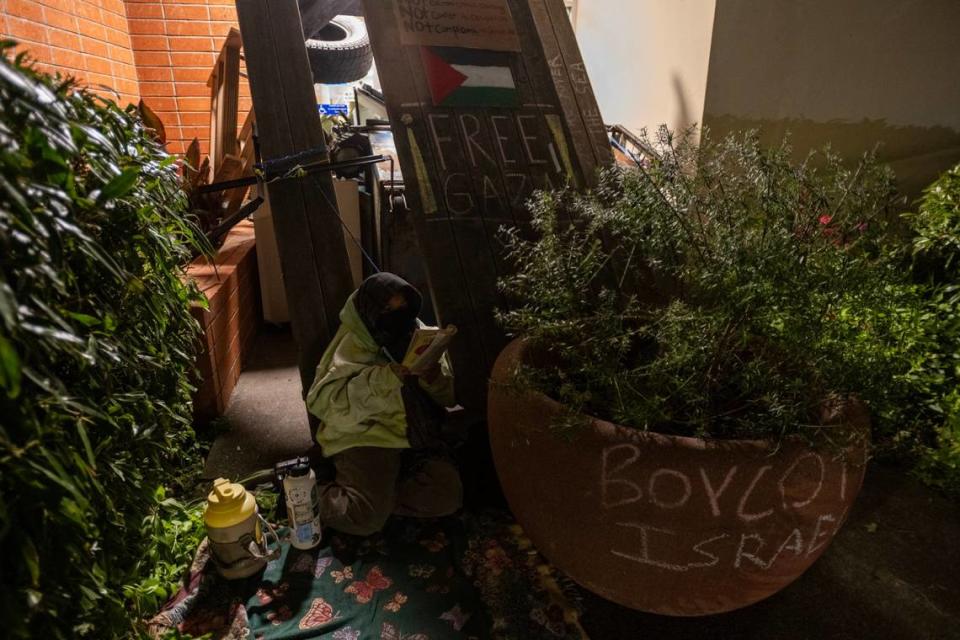
This escalating scene at Cal Poly Humboldt unfolded as students across the nation began occupying campus spaces in pro-Palestinian demonstrations. And while other, larger universities have drawn more national attention, this small, quiet college in Northern California has seen one of the most intense university protests, leading to more than 30 arrests, millions of dollars in damage and a shutdown of the campus.
Schumichen, a third-year transfer student from El Dorado Hills, said she returned to the quad later that first night to see what had developed. She returned sporadically throughout the week, and was especially excited about the teach-in, which took place in the quad last Wednesday.
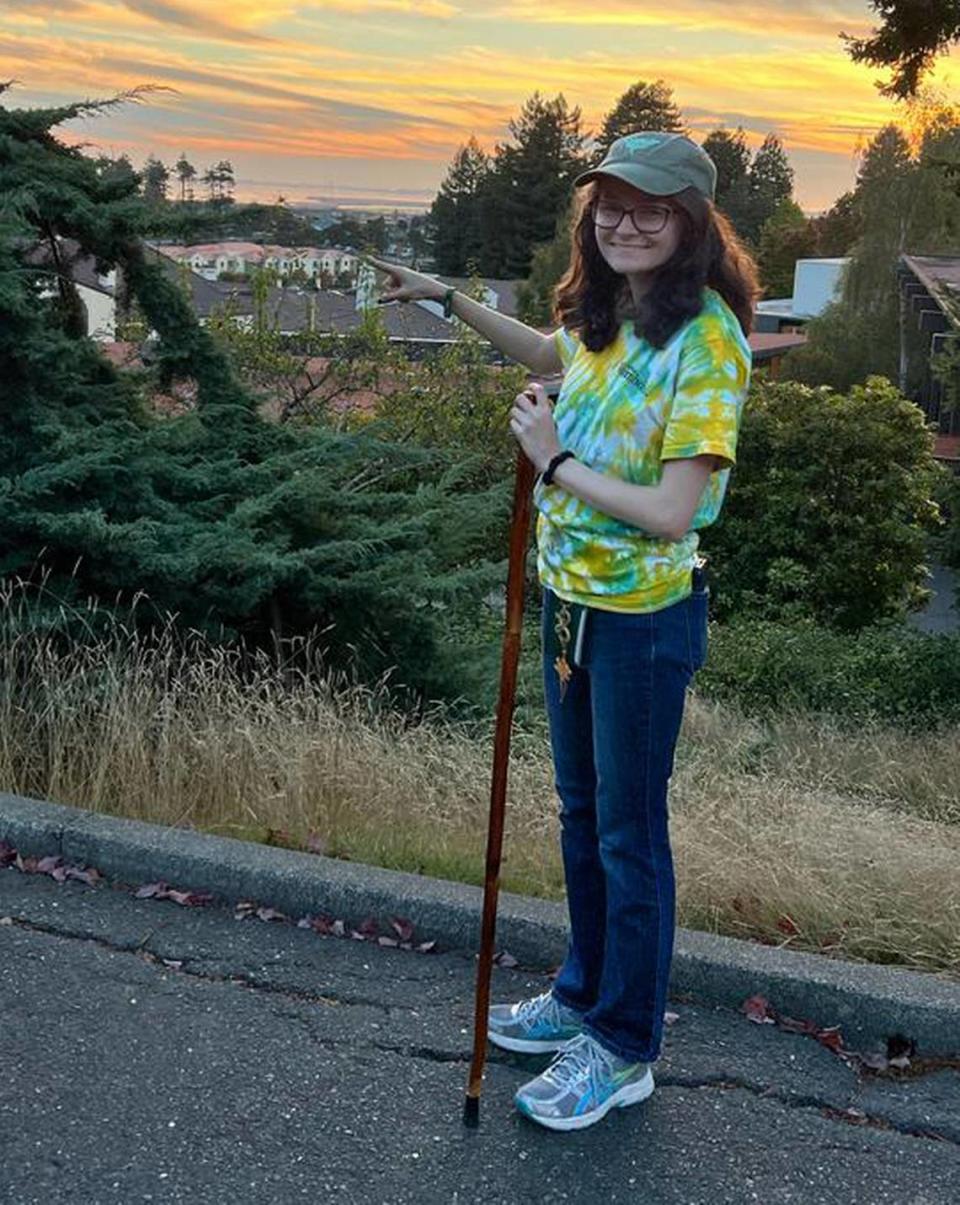
Beyond drawing some chalk art on the ground, Schumichen said she did nothing besides what she might have done on any other day on the progressive and close-knit campus: seek out her friends, gather where professors were speaking and participate in some of the impromptu campus activities that students love about the small, 8,000-person college.
“Our professors were there,” Schumichen said. “So it felt safe to be there.”
A suspension, and countless questions
But on April 26, four days after the initial demonstration, she received an email from Molly Kresl, associate dean of students, informing her that she had been placed on an interim suspension “for either the duration of the occupation of Siemens Hall and Nelson Hall or May 12th, 2024, whichever is shorter.”
Kresl alleged that Schumichen was guilty of unauthorized entry and misuse of a university building and interfering with university officials and public safety officers. Schumichen denied those allegations and said she never entered Siemens Hall.
She is alleged to have disrupted the university’s ability to facilitate classes, obstructed the free flow of pedestrian traffic by blocking entries to campus buildings, as well as violating the university’s fire code and participating in “an activity that infringes on the rights of other students, staff and faculty.”
“I am confident,” Schumichen said, “that this was a scare tactic to keep people away from the protest.”
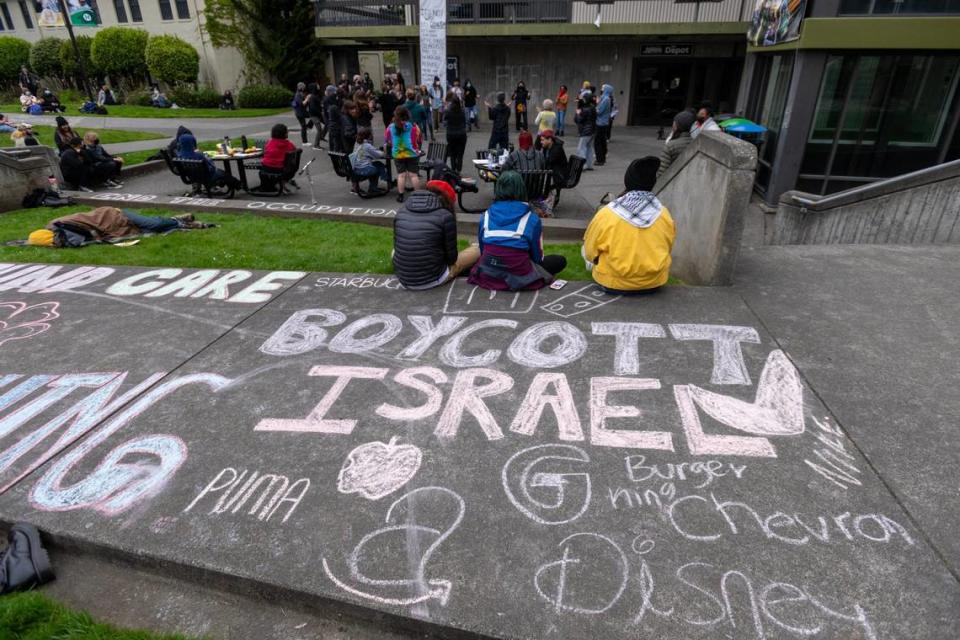
“We do not have any more information at this time,” a university communications specialist wrote in an email to The Sacramento Bee when asked about the number of students suspended, how it would enforce suspensions or what the student appeals process is.
Schumichen has compared her email with those received by several other students. All received the email at the same time on April 26 and were given an identical case number.
“My mental health has been a wreck this past week with constantly being on edge,” said Schumichen.
She lives in campus housing and wasn’t even sure if she was allowed to be in her dorm, because her interim suspension indicated she could not use any campus facilities.
She responded to Kresl’s email that day, she said, and did not hear back until May 1. She was sent a Google document asking if she was in Siemens Hall or the quad between April 22 and April 30 and, if so, what time she was there, what she was doing, and where exactly she was.
“It seems like they want people to incriminate themselves,” Schumichen said.
She received another message May 2 confirming that she was allowed to stay in her dorm during her suspension.
The ‘true cost’ of student protests
On April 29, a week after students clashed with police as they took over Siemens Hall, the police returned in full force, in larger numbers than before, with help from across the state.
The Sacramento County Sheriff’s Office — one of the largest law enforcement agencies in Northern California, with 1,250 sworn deputies — confirmed that 30 of its deputies were sent to Arcata as part of the state’s mutual-aid program. Police from San Francisco and California Highway Patrol also aided Humboldt County law enforcement in clearing out the protesters.
Around 2:30 a.m. Tuesday, police arrested 31 people, who now face charges of unlawful assembly, vandalism, conspiracy, assault of police officers, among other charges.
In addition to the student arrests, students not in Siemens Hall, but who had visited the demonstrations in the quad such as Schumichen, were also placed on interim suspension, though the university did not confirm the number of students who received notifications about those suspensions.
Cal Poly Humboldt was the first university in the California State University system to initiate an occupation of campus space in support of Palestine, and is now one of more than 100 across the country to do so.
Campuses across California have seen varying levels of protest and violence. At Sacramento State, students have set up an encampment near the library that President Luke Wood has allowed until May 8 and, if the demonstration remains peaceful, it possibly can be extended again.
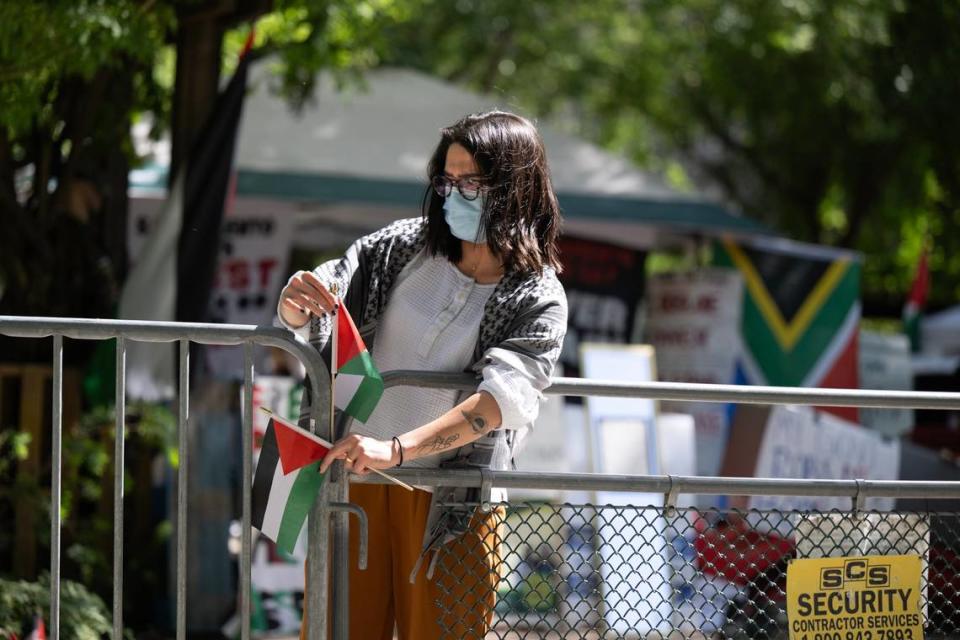
At the same time, students at the University of California, Los Angeles clashed with counter protesters and police. Police arrested more than 200 on the UCLA campus, ultimately clearing the encampment Thursday morning as President Joe Biden condemned lawbreaking – while saying he supported students’ First Amendment rights to protest.
The protests “put to the test two fundamental American principles,” he said at the White House. “First is the right to free speech and for people to peacefully assemble, make their voices heard. Second is the rule of law. Both must be upheld.”
Cal Poly Humboldt administration said the financial costs of the Siemens Hall occupation hover in the millions, and have disrupted thousands of students’ final weeks of the spring semester and commencement ceremonies.
“The University’s goal has always been to bring a peaceful end to the occupation, and we continue to talk to anyone willing to have productive and respectful dialogue,” the campus said in a statement April 28.
“While it’s too early to assess the cost of illegal activities, we estimate it to be in the millions. That includes damage done by theft, vandalism and graffiti, and the supplies and personnel needed to repair that, in addition to the loss of revenue from disruption to University operations.
“But the true cost has been the disruption of the education of our students who came here to learn and get a college degree.”
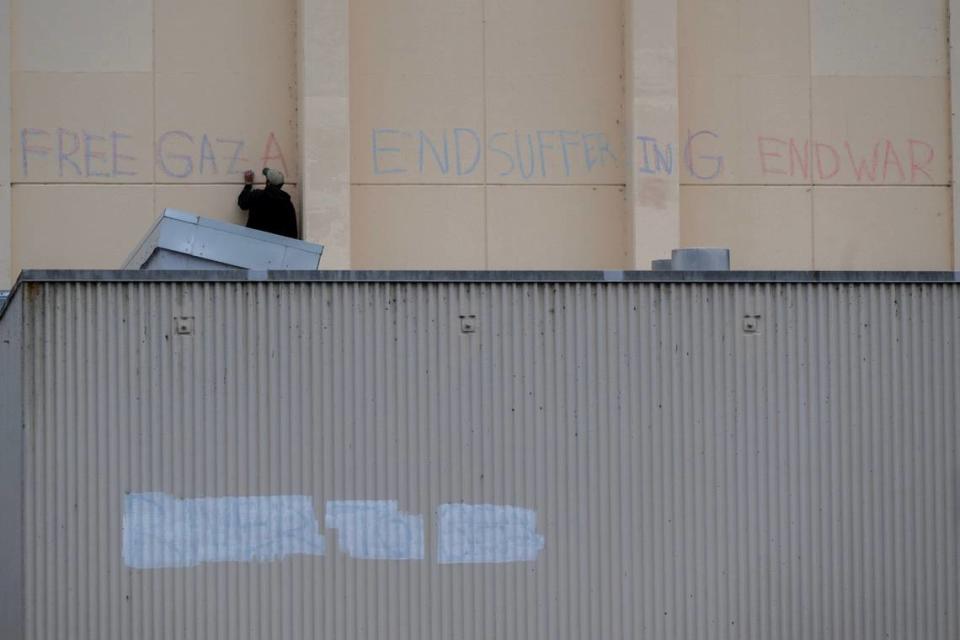
Chaos and confusion for students and faculty
Schumichen, and many other students, feel abandoned by the university’s administration, which they said criminalized students for being on campus during an important event. They said the university protected cops and buildings more than it protected its students.
Faculty members have voiced concerns about student mental health and their own confusion about campus procedures.
“The word I would use is ‘traumatic,’” Aaron Donaldson, a professor in the communications department and site rep for the California Faculty Association, said about the last two weeks at Cal Poly Humboldt.
Donaldson had been an Arcata resident who’s lectured at Cal Poly Humboldt since 2015. For him, the university’s response to the Siemens Hall occupation was traumatic for two reasons: first, because seeing students harmed and threatened with police violence is disturbing and, second, because of the logistical impracticalities of an abrupt transition to online learning.
“I’ve got 100 outlines to grade,” Donaldson said. “But they’re all locked in an office.”
Faculty were included in the administration’s “hard closure,” and on Monday, Donaldson and other faculty members received an email alert from the administration informing them that entering campus at all “may lead to corrective or disciplinary action, up to and including termination of employment.”
“When they pivot online, if they don’t give us facilities at school, they are squatting in our house,” Donaldson said. “The CSU cannot squat in my house, not in this economy, not ever. That’s a huge ask. That’s what those classrooms are for; that’s what my office is for.”
Donaldson is also on a teaching contract, meaning the university could simply refuse to bring him back next year because of his participation in the teach-in, where he spoke to students and community members about nonviolence.
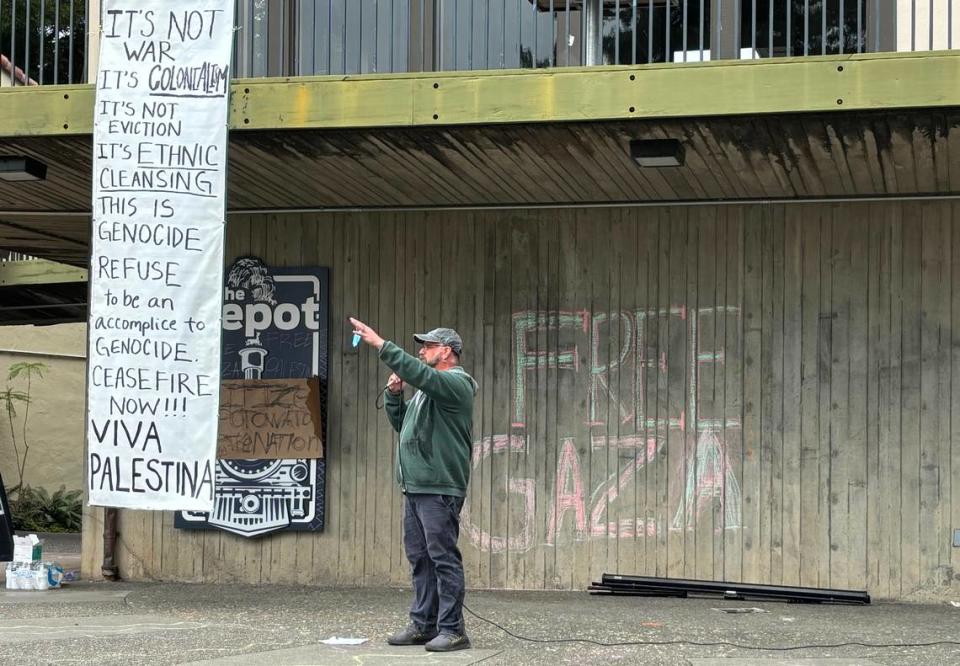
“So far, thankfully, there has been no retribution. But it’s early, and that can come in lots of ways,” he said. “I’m a lecturer on a contract year. They could not hire me back. There could be cuts. There are all sorts of things that we’re worried about.”
Legal implications are cause for worry, too. Rouhollah Aghasaleh, a School of Education professor, was arrested with dozens of students Monday and is now on a hunger strike.
“In defiance of our wrongful arrest, I have chosen to reject any bond and embark on a hunger strike,” Aghasaleh said. “I refuse to accept the label of criminal for standing up for an ethical reason.”
Aghasaleh plans to continue the hunger strike until “all of my students and me are released and justice is served.”
‘I have been overwhelmed’
For students like Schumichen, whose interim suspension will last until May 12, and professors like Donaldson, the cost of being treated like a criminal is tough to put a dollar sign on.
The California Faculty Association has called on university President Tom Jackson Jr. to step down “instead of criminalizing our students,” Donaldson said.
“It has become very clear to me just how separated he is from the majority of this school,” Schumichen said.
It will take months for the university, the faculty, and the students at Humboldt — and campuses across the state and country — to recover from campus occupations. But for the students and faculty involved, even if just on the periphery, it was worth it.
“I have been overwhelmed at the community support that has come about because of this,” said Schumichen.
“From faculty to students to non-campus-associated members of the public, it has been amazing to see. There were marches from the Arcata plaza to outside the library circle on Sunday and Monday, staying off campus to abide by the hard closure order of campus. … It was heartwarming to see the swarms of support.”
McClatchyDC’s Gillian Brassil contributed to this story.

